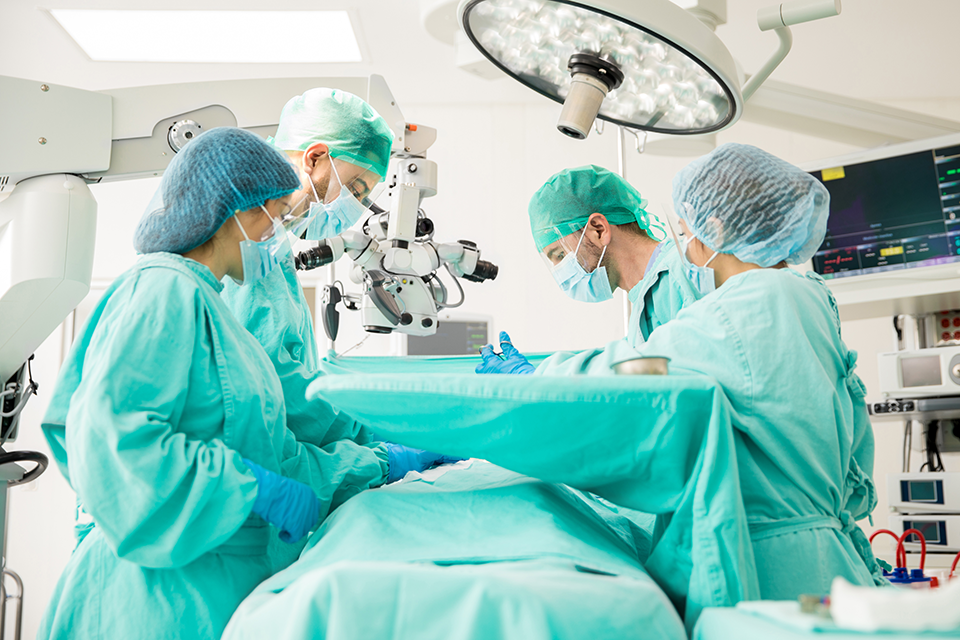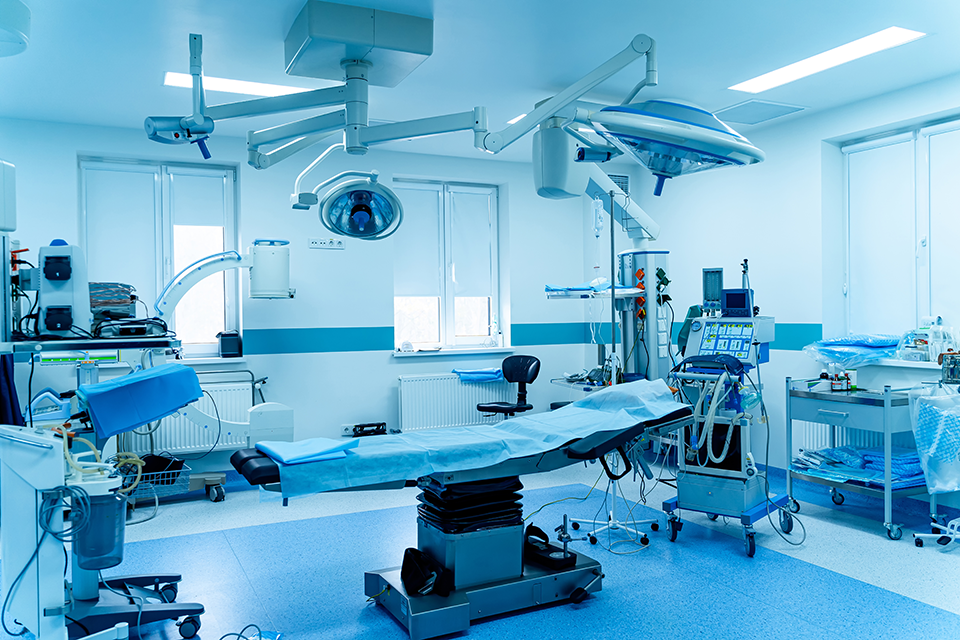Optimizing Hybrid Operating Rooms for the Patient, Part 4: Operational Efficiency & Profitability
In our ongoing series on optimizing hybrid operating rooms (ORs) for patient benefit, we've explored the fundamental aspects of these advanced...
3 min read
Domico Med-Device May 30, 2023
This is Part 3 of a 4-part series on optimizing hybrid ORs for patients. Part 1 offered an overview of hybrid OR benefits. Part 2 discussed ways to enhance the patient experience. In Part 3, we’ll detail how a better patient experience fosters improved workflow and productivity.
Image-guided therapy (IGT) and hybrid operating rooms are transforming surgical environments by not only improving patient outcomes but also enhancing staff workflow, productivity, and job satisfaction. By optimizing these aspects, hospitals can create a more efficient and supportive environment for their medical teams, ultimately leading to better patient care and operational success.
In a hybrid OR with IGT capabilities, the right equipment enables staff to:
Quickly transition from a minimally invasive procedure to a fully draped, open procedure.
Switch between different surgeons for complementary procedures performed during the same surgery.
Prep the same OR for various interventions between patients.
Take images during surgery without the need to reposition patients.
Hybrid ORs are designed to optimize workflow by addressing common challenges associated with traditional operating rooms. One key advantage is the ability to transition swiftly between minimally invasive and open procedures. In traditional settings, converting from one approach to another can be time-consuming and cumbersome, often requiring extensive reconfiguration of the room. Hybrid ORs, equipped with versatile tools and adaptable setups, allow for seamless transitions. This capability not only reduces the time spent on reconfiguring the room but also minimizes disruptions to the surgical process, ensuring that procedures can proceed efficiently and without unnecessary delays.
The flexibility to switch between different surgeons and procedural approaches within the same room further enhances workflow efficiency. In cases where multiple specialties are involved, such as complex surgeries requiring both neuro and vascular interventions, hybrid ORs facilitate smooth transitions between different types of procedures. This capability eliminates the need for multiple room changes and allows for a more cohesive and streamlined surgical experience.
Efficiently prepping the OR for various interventions between patients is another significant benefit. Traditional ORs often face challenges related to downtime between cases, with staff needing to reconfigure the room for different types of procedures. In contrast, hybrid ORs are designed with modular and adaptable equipment that allows for quick and efficient setup. This reduces the time spent on rework and maximizes the use of valuable surgical space, leading to increased productivity and reduced turnaround times.
The integration of advanced rails and attachments is essential for enabling quick conversions. For example, in a hybrid OR, the patient surface may not come with built-in accessory rails. However, for procedures like the repair of an abdominal aortic aneurysm, 40-inch accessory rails can be attached to either side of the table to accommodate retractors if a minimally invasive procedure requires conversion to an open approach. This level of flexibility ensures that staff can adapt to changing procedural needs without facing delays or interruptions.
One of the most critical aspects of hybrid ORs is the impact on caregiver confidence. Equipment designed specifically for these advanced environments plays a crucial role in ensuring that staff can perform procedures with confidence and precision.
 For instance, neuro tables often lack provisions for securing skull fixation devices, which are essential for procedures like craniotomies. By incorporating a Mayfield adapter onto the IGT table, staff can securely mount cranial fixation devices, ensuring that patients are positioned accurately and safely. This added functionality reduces the risk of procedural complications and enhances staff confidence in their ability to manage complex cases.
For instance, neuro tables often lack provisions for securing skull fixation devices, which are essential for procedures like craniotomies. By incorporating a Mayfield adapter onto the IGT table, staff can securely mount cranial fixation devices, ensuring that patients are positioned accurately and safely. This added functionality reduces the risk of procedural complications and enhances staff confidence in their ability to manage complex cases.
Bariatric patients present additional challenges, as many IGT tabletops are not designed to accommodate their needs. Bariatric extenders address this issue by providing wider surfaces and securement straps, ensuring that larger patients remain safely positioned during image-guided procedures. The availability of these specialized tools is crucial for maintaining high standards of patient care and safety, particularly in cases where traditional equipment may fall short.
Despite their best efforts, hospital staff may still have concerns about patient safety. Tools such as Mayfield adapters, bariatric extenders, and memory foam table pads play a vital role in mitigating these concerns. By enhancing equipment adaptability and reducing the risk of procedural complications, these tools help build caregiver confidence and contribute to a more supportive and effective working environment.
Providing high-quality care is a top priority for hospital staff, and having access to the right tools is essential for achieving this goal. MRI and CT scans are highly sensitive, and image-guided therapy requires operating rooms to be equipped with MRI-compatible or radiolucent materials to avoid interference.
Hybrid ORs equipped with rail extenders and carbon fiber arm boards offer significant advantages in terms of procedural versatility. Carbon fiber arm boards can be rotated or extended to the side, allowing clinicians to obtain lateral images or access radial and brachial arteries with greater ease. This flexibility in positioning and imaging contributes to more accurate and effective procedures, ultimately leading to better patient outcomes.
The benefits of a well-equipped hybrid OR extend beyond improved patient care. Enhanced equipment utilization and procedural versatility contribute to increased efficiency and productivity. For hospital staff, these improvements translate into higher job satisfaction. When staff have access to advanced tools and technologies, they can perform their roles more effectively, leading to a more positive work environment.
Moreover, the reduction in procedural delays and the ability to handle a broader range of interventions contribute to improved staff morale. As staff experience increased efficiency and effectiveness in their work, they are more likely to feel valued and motivated. This positive impact on job satisfaction can lead to higher levels of staff retention and a more cohesive team dynamic.
As we conclude Part 3 of our series, it’s clear that optimizing the patient experience in hybrid operating rooms not only benefits patients but also significantly enhances staff workflow, productivity, and confidence. The next installment, Part 4, will explore how these improvements contribute to operational efficiency and profitability. Stay tuned to discover how optimizing hybrid ORs can drive better financial outcomes for your healthcare facility.

In our ongoing series on optimizing hybrid operating rooms (ORs) for patient benefit, we've explored the fundamental aspects of these advanced...

This is Part 2 of a 4-part series on optimizing hybrid ORs for patients. Part 1 offered an overview of hybrid OR benefits. In Part 2, we’ll discuss...

Image-guided therapy (IGT) and hybrid operating rooms are transforming modern healthcare by integrating advanced imaging technology with traditional...